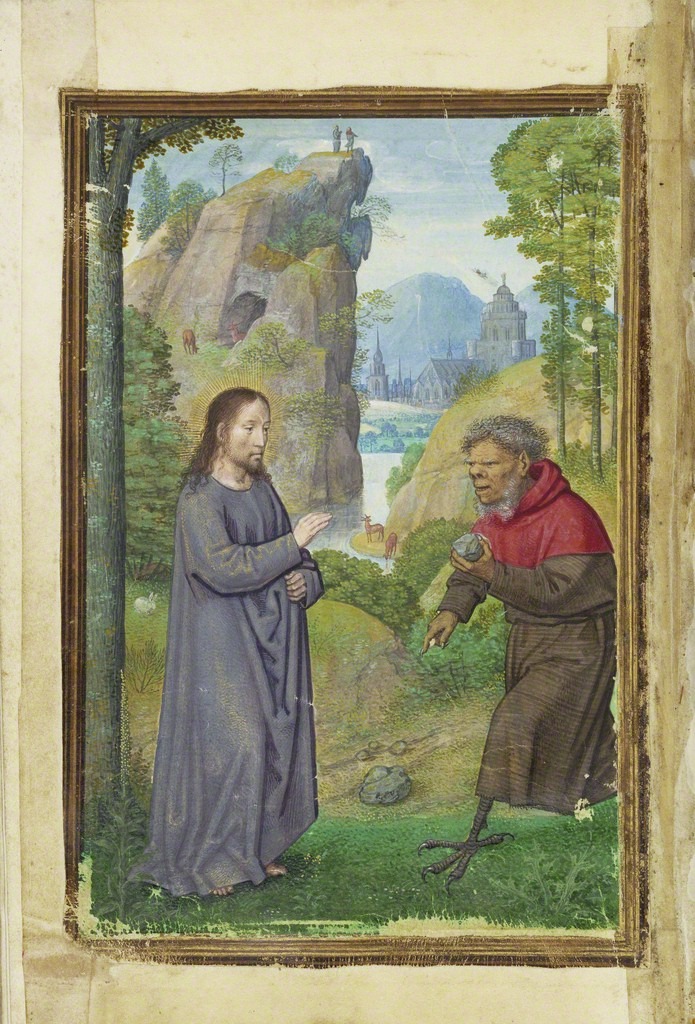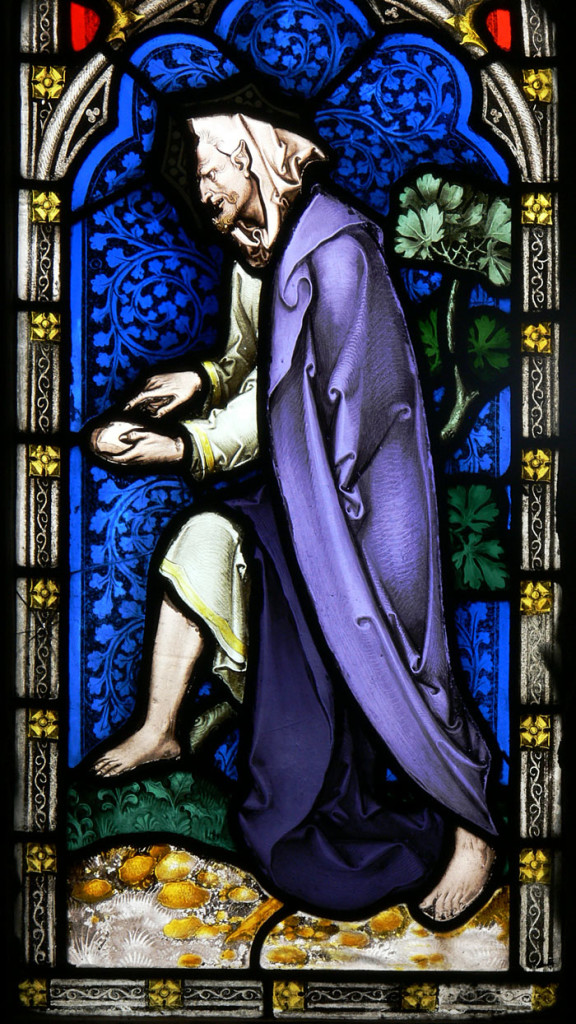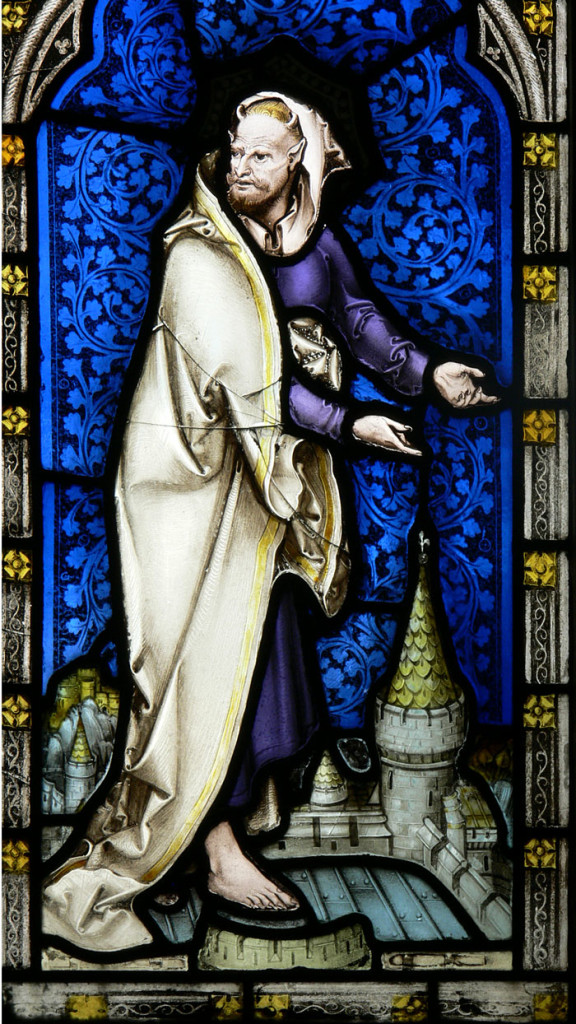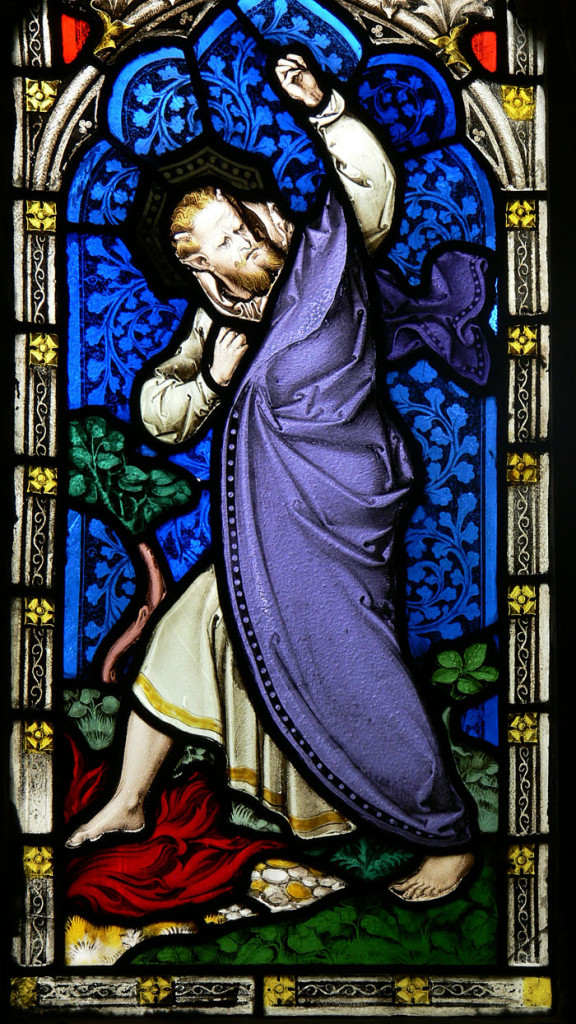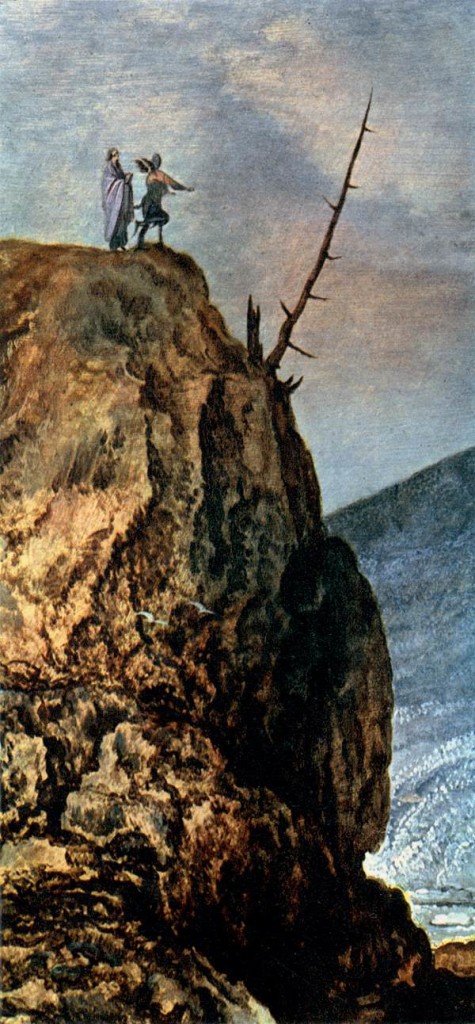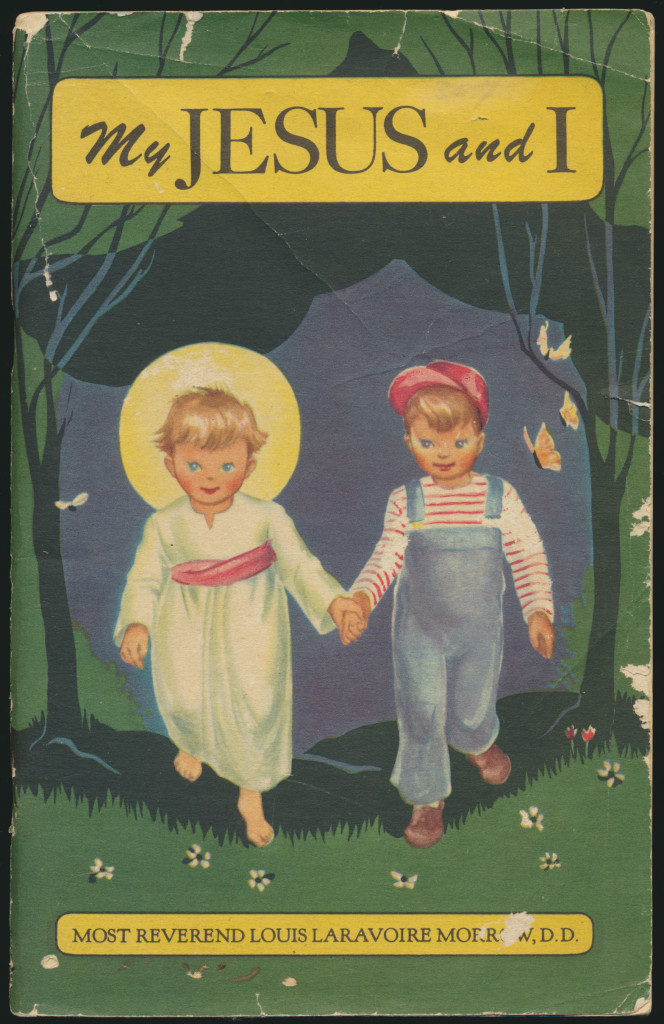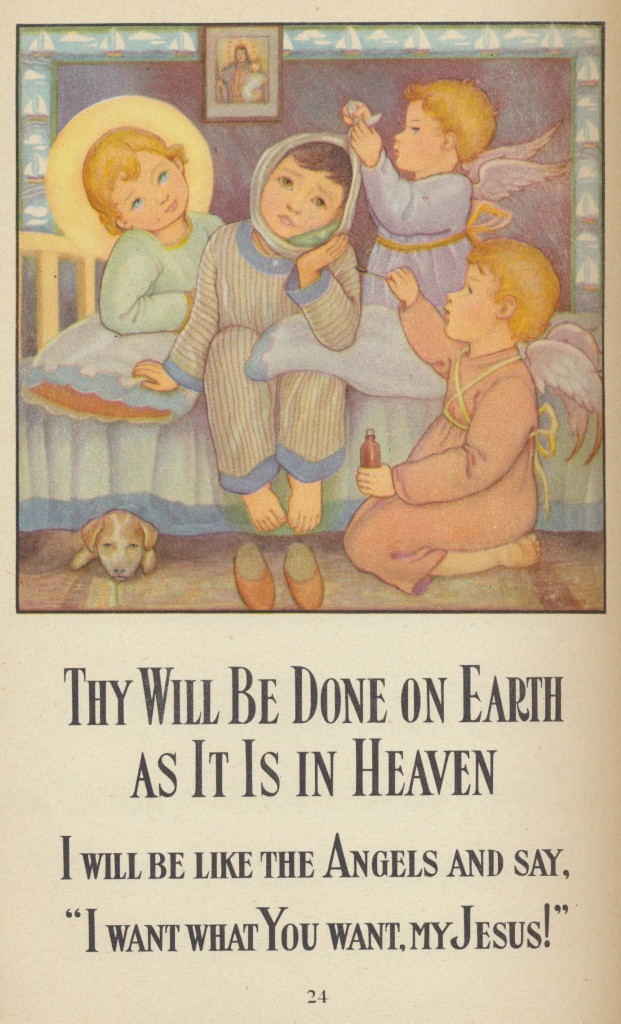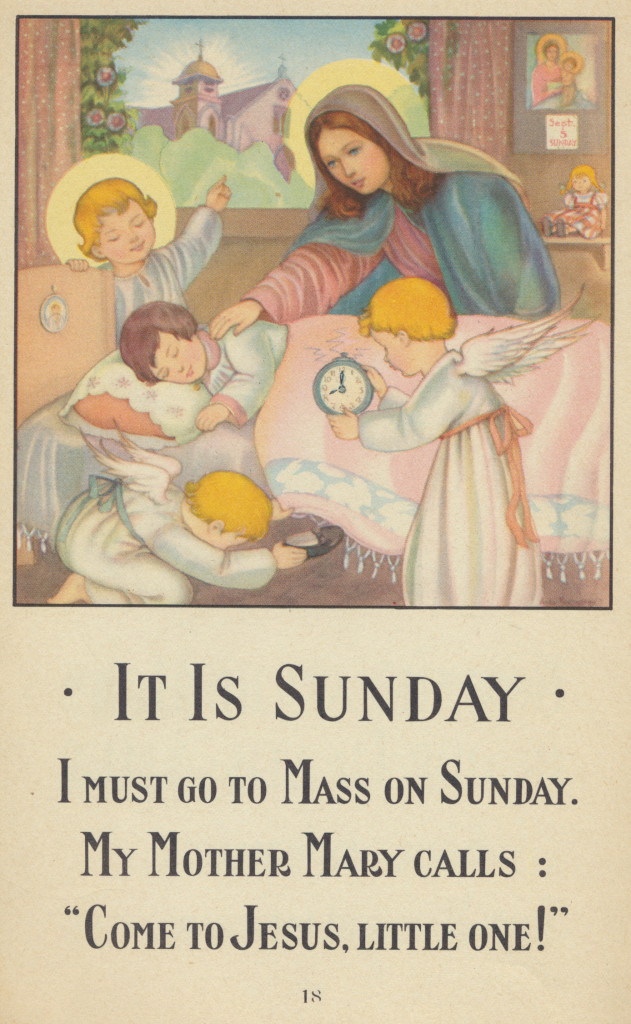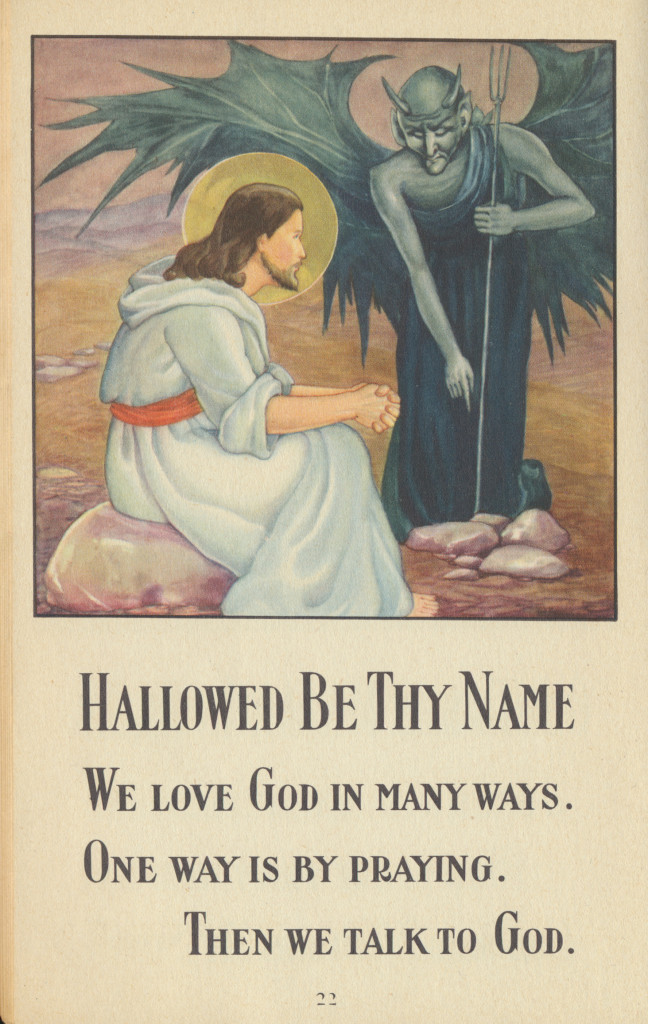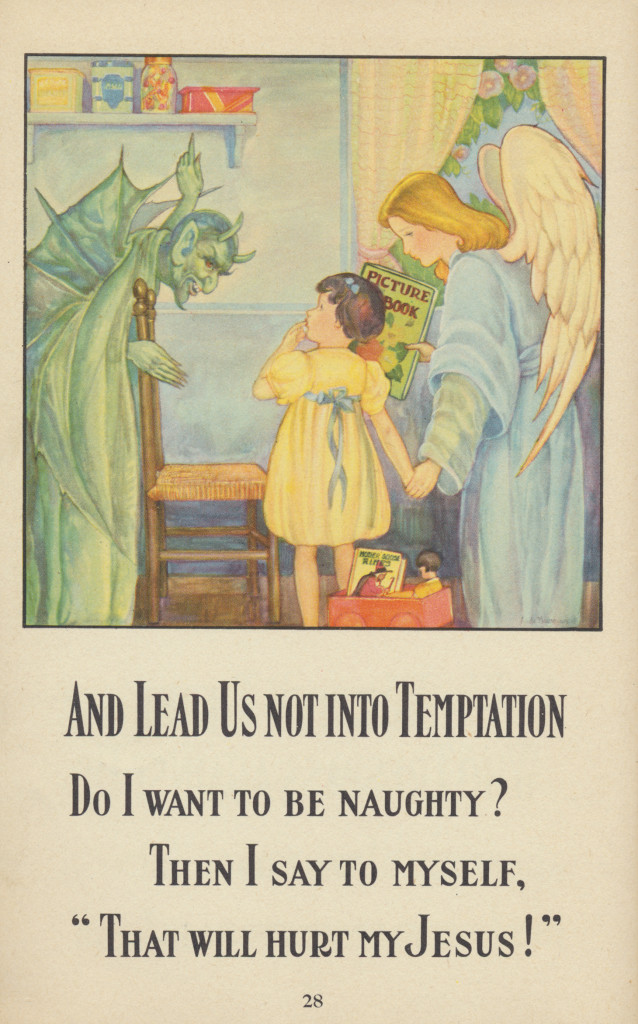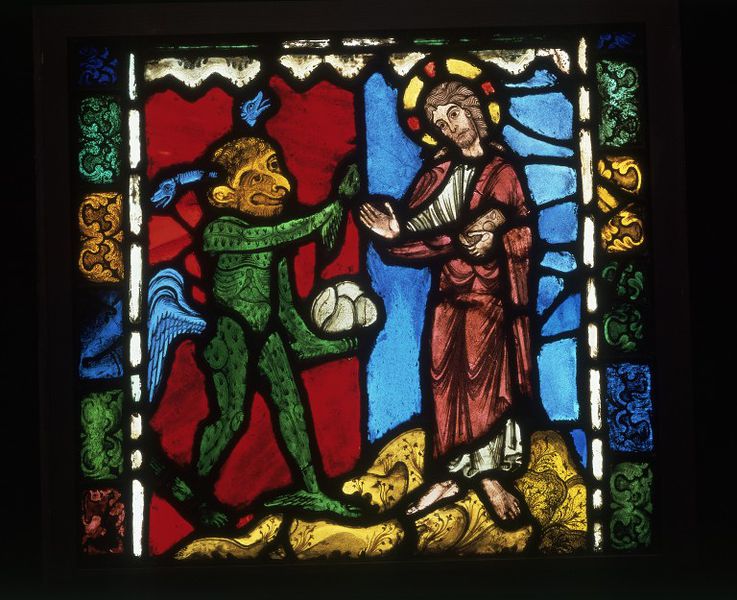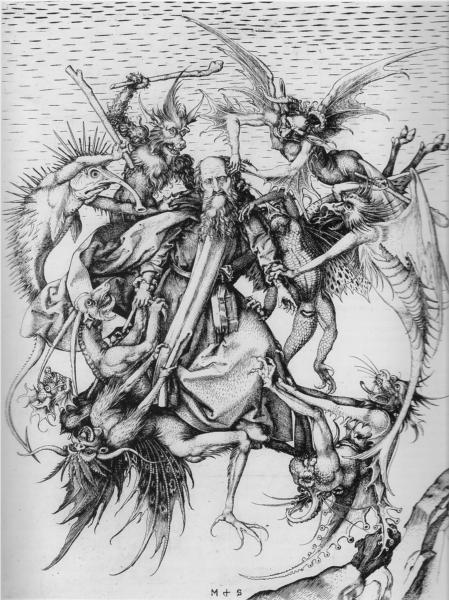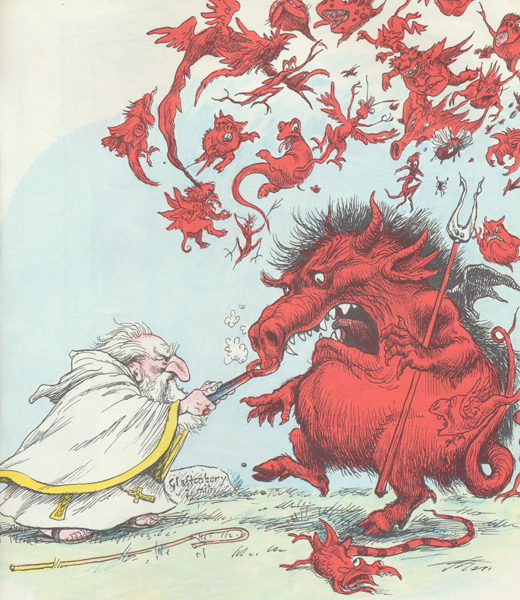
Illustration copyright Wallace Tripp
from A Great Big Ugly Man Came Up and Tied His Horse to Me
St. Dunstan, as the story goes,
Once pulled the devil by the nose
With red hot tongs, which made him roar,
That could be heard ten miles or more.
Today is the feast day of St. Dunstan. If you’re not familiar with the life and legends of St. Dunstan, they’re well-worth a bit of your time. Dunstan (909-988) was educated at Glastonbury Abbey as a child. He became a skilled musician, scribe, sculptor, and metalworker. At least one of his works survives. A devout and intellectual man, he served as abbot and bishop, and eventually became Archbishop of Canterbury.
Some of the most popular stories of Dunstan involve his encounters with the devil. The one illustrated above is said to have taken place in Glastonbury during the time the saint was living as a hermit.
While he was in his cell, Dunstan was visited by a shape-changing devil who appeared first as an old man asking him to make a chalice, then a young boy, and then a seductive woman.
As Eleanor Parker relates in her most excellent blog, A Clerk of Oxford:
Dunstan realised that his guest was a devil; but, pretending not to notice, he went on with his task. He took up the tongs from among his tools and laid them in the fire, waiting until they were red-hot. Then, pulling them out of the fire, he turned round and seized the devil by the nose with the tongs. The devil struggled and screamed, but Dunstan held on until at last he felt he had triumphed. Then he threw the devil out of his cell and it fled, running down the street and crying “Woe is me! What has that bald devil done to me? Look at me, a poor wretch, look how he has tortured me!”
Dunstan was one of the vigorous saints–going after the devil hammer and tongs. There’s even a story that he shod the devil’s cloven hoof; that tale is said to be the origin of the lucky horseshoe you see nailed over doorways. Because he was known for his metalwork at Glastonbury, Dunstan is the patron saint of goldsmiths, silversmiths, blacksmiths, armorers, and jewelers.
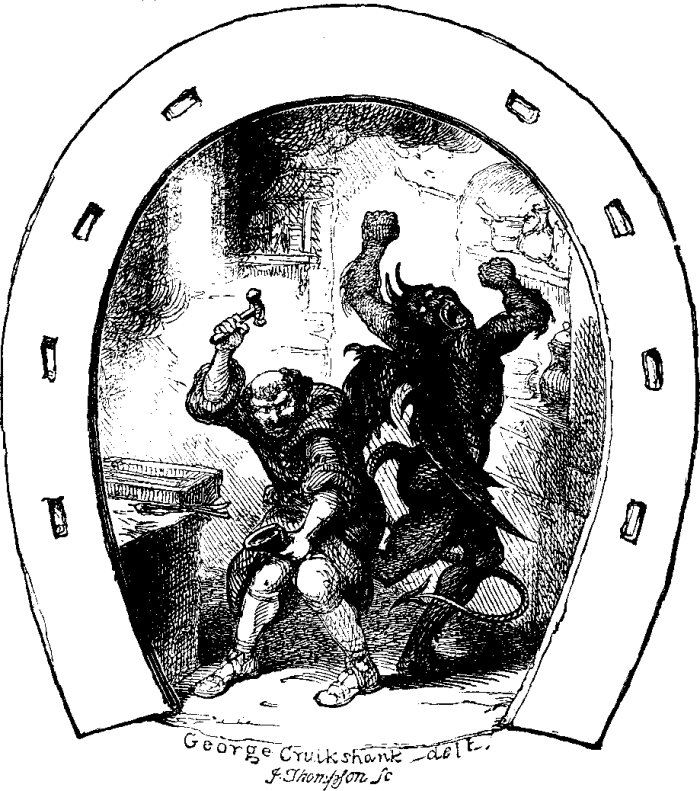
Dunstan shoes the Devil’s hoof
illus. by George Cruikshank
Image: Wikimedia Commons

